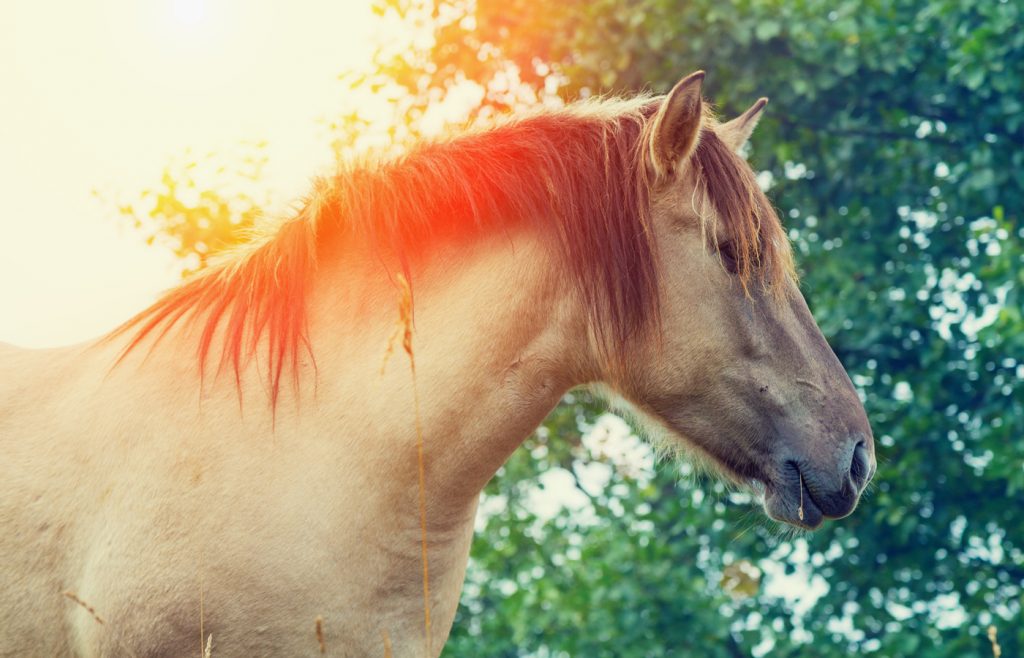
Do you remember the childhood game of follow the leader? Simply stated, you stayed in the game by obeying the directions given by the leader. And do you know what? Horses greatly enjoy playing follow the leader. By nature, horses are herd bound, foraging, prey animals, Once we learn what this means and how to interpret it, we can be the leader that horses want to follow. And both the horse and the human will enjoy this relationship in new ways.
In the wild, horses move in large herds over great expanses of territory in search of food and water. There’s strength in numbers, offering protection from predators that are never too far away. Imagine the problem if a herd without leadership was threatened by a mountain lion or pack of wild dogs. Instead of taking direction from a leader and moving off as a group in one direction, horses would scatter and become isolated.In the ensuing chaos, the unfortunate horse that found himself alone would greatly increase his chance of perishing.
When effective leadership exists, there is a greater chance for the entire herd to survive daily threats from predators. Horses instinctively seek out and want to follow a leader. It’s literally a matter of life and death. The leaders of the herd are wise, older mares who have experienced many challenges. They know when to stop grazing and flee post haste, and they know when a false alarm is sounded and the herd should stay put. Without a leader, each individual would be forced to remain on full alert all thetime and many in the herd would die from exhaustion and anxiety.
The horses in our pastures are no different from wild horses. Our horses are ready to flee at the first sign of trouble, and it’s up to us to reassure them that many scary situations are really okay. Horses that are emotionally stable and have confidence in their leader won’t gallop off when they feel threatened by every plastic bag blowing by (it’s going to eat me!), every saddle pad being placed on their back (it’s going to leap onto me!) or any new situation (this is bad, I just know it!).
My leadership role becomes clearer to me each day as I work with Chance, the least experienced of my horses. I’ve spent a great deal of time learning to work horses from the ground (as opposed to being in the saddle) on what is called “halter training.” This involves working with the horse with a simple knotted-rope halter attached to a twelve-foot lead rope. By using body language to establish my space and dominant position, offering physical cues with the rope to let the horse know what I want, and using very little if any verbal communication (constant chatter can be a major distraction to them), I lead the horse from one simple success to the next. From moving left and then right around me ina circle, to moving hindquarters away from me as I ask the horse to stop, to backing up, the horse gains confidence in me as a leader.
When I began this process with Chance, a spirited horse without halter training, he was wary of the situation and ready to flee. His neck was stiff, his eyes wide open, and his back seemed to rise up from the stress and the emotional strain.
I practiced being an effective, trusted leader. With calm, slow movements, I gave Chance explicit cues and every opportunity to make good decisions.When we began, Chance seemed to be standing in quickly drying concrete and would not move. After cuing him to walk, lifting my leading left hand, and moving it to the left as I walked towards his shoulder, he slowly began to move his feet.
I intently focused on Chance, his physical reactions and his emotional state, as I practiced being a fair and firm leader. The most amazing sense of communication developed between us as Chance quieted and began to enjoy the guidance that I offered him. His head dropped slightly as his neck relaxed. He moved in a comfortable circle around me, his inside ear turned in my direction, his inside eye softly focused, and his whole body settling into the ground and the exercise. When I stopped moving my feet and dropped the rope to my side—the cues to slow down and stop—he executed a perfect stop, turned his hindquarters away from me (a sign of respect for the leader), and licked his lips (the classic cue that says, “I’m getting it and I really like it”).
In less than 15 minutes, Chance had acknowledged me—the city kid and novice horseman—as his leader. I had earned his respect by acting like a leader, encouraging him to follow in clear, simple language that he understood, and by giving him every opportunity to be a successful follower. I think I’m going to like this game!
